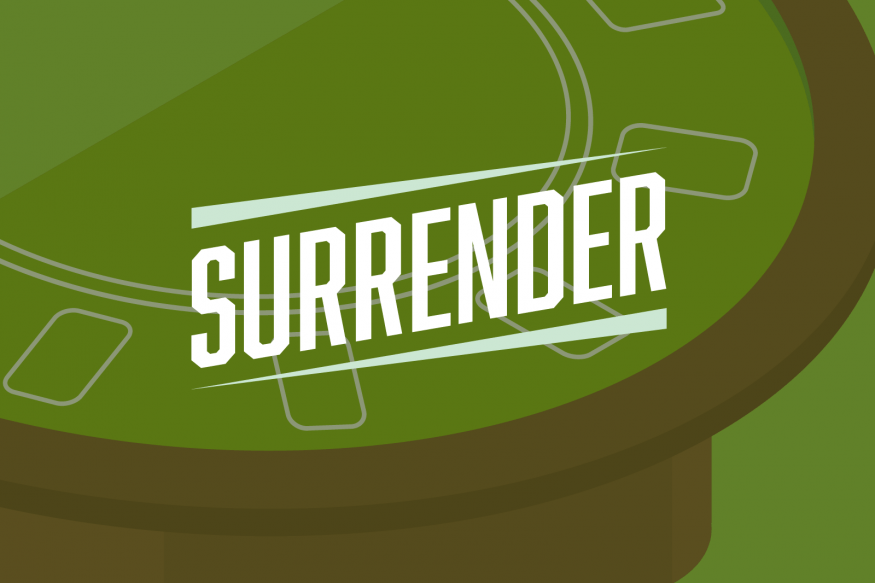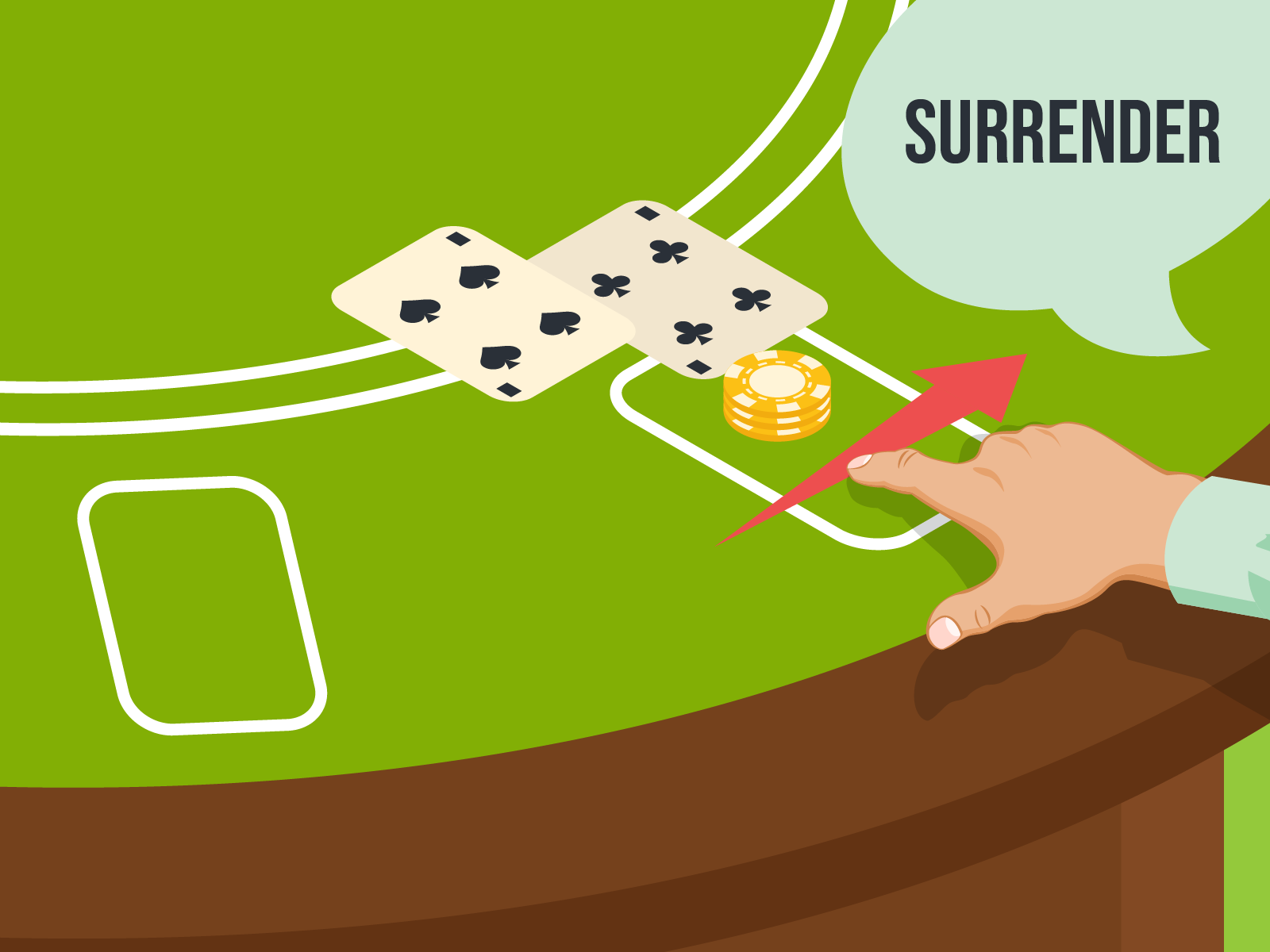Understanding Surrender in Blackjack: A Strategic Guide

Surrender In Blackjack: Everything You Need To Know To Take Advantage
How Surrender Impacts Blackjack Gameplay
Surrender is an often-overlooked option in blackjack, but it can be a valuable tool for reducing losses when used correctly. Available in some brick-and-mortar casinos and widely found at online gaming tables, the surrender rule allows players to fold unfavorable hands and reclaim part of their wager. Mastering the use of surrender can effectively decrease the house advantage and improve your staying power at the table.
The Basics: What Does Surrender Mean in Blackjack?
In blackjack, surrender is an optional rule enabling a player to forfeit their hand after the initial deal-before drawing additional cards. When this option is selected, the player gives up half of their original bet and the round ends for them. Surrender is most useful in situations where the odds of winning are poor, offering a strategic way to cut losses rather than risking the entire wager.
Differentiating Early and Late Surrender
There are two main surrender variations: early and late. The key distinction lies in the timing:
- Early Surrender: Enables players to surrender before the dealer checks for blackjack.
- Late Surrender: Allows surrender only after the dealer confirms they don’t have blackjack.
While early surrender is extremely advantageous for players, it’s become a rarity in modern casinos. Late surrender remains more common, especially at online venues, albeit with slightly less impact on the overall house edge.
Early Surrender: A Powerful Yet Uncommon Rule
Early surrender once caused significant headaches for casino operators due to the major advantage it offered to players. Introduced in Atlantic City during the late 1970s, the intention behind early surrender was to attract more players and sidestep certain surveillance concerns. However, its generosity led to significant reductions in the house edge-by about 0.6%.
Such a substantial player advantage even prompted regulatory intervention in New Jersey, leading to the rule’s rapid decline. Today, early surrender is seldom found in physical casinos. When featured online, it is typically balanced by other rules favoring the house.
If you do encounter early surrender, optimal use involves surrendering:
- Hands of 14, 15, or 16 when the dealer shows a 10.
- Hard totals of 5, 6, 7, 12, 13, 14, 15, 16, or 17 against a dealer’s ace.
- Hard 4 should also be surrendered if the dealer is required to hit soft 17.
Late Surrender: The More Common Option
Late surrender, the rule you’re more likely to find, allows you to surrender your hand and get half your bet back-only after the dealer checks for blackjack. This reduces player losses by a smaller margin (about 0.05% to 0.1%), but still offers a valuable edge when used wisely.
For instance, in a typical six-deck game, late surrender can reduce the casino's advantage from about 0.42% down to 0.35% when applied with perfect strategy. While not advertised as prominently at physical tables, the surrender option is usually easy to spot in digital or electronic blackjack games. If you're unsure, ask the dealer directly if surrender is offered and which form it takes.
When signaling surrender at the table, especially in games dealt from a shoe, it's customary to draw a horizontal line behind your bet with your index finger and say "Surrender".

Hand signal for surrender in blackjack
Procedures can vary for handheld games, so confirm with your dealer before acting.
When Should You Surrender in Blackjack?
Surrender should only be considered when your chance of winning falls below 50%. The precise decision depends on variables such as the number of decks and whether the dealer hits or stands on soft 17. Here are some essential guidelines for late surrender:
- Facing a dealer 9: Surrender only if you have a total of 16 with four or more decks in play.
- Dealer shows 10: Surrender all 16s, and also 15s unless it's a single deck game.
- Dealer shows Ace:
- If the dealer stands on all 17s, surrender 16 in any deck count.
- If the dealer hits soft 17, surrender 15, 16, or 17 regardless of deck count.
These strategies represent optimal moves for maximizing your use of the surrender option.
Total Dependent vs. Composition Dependent Surrender Decisions
Most surrender advice is based on the total value of your first two cards ("total dependent"). However, "composition dependent" strategies consider the specific makeup of your hand. For example, a 9+6 and an 8+7 both total 15, but may call for different actions based on card composition-especially in single deck games.
For most players, especially those new to surrender strategy, the added complexity of composition-dependent play offers minimal benefit and is best reserved for advanced players.
Conclusion: Make the Most of Your Blackjack Surrender Option
Used wisely, surrender is a valuable tactical maneuver that allows you to limit your losses and amplify your advantage at the blackjack table. While early surrender is increasingly rare, mastering late surrender can still enhance your playing profitability and bankroll longevity.
If you're hesitant about the optimal decision in a given situation, strategy charts can be helpful references. For further tips to refine your game, explore guides on hitting, doubling down, splitting, or even dealing blackjack like a pro.
- Guides on when to hit in blackjack
- Advice on when to double down in blackjack
- Strategies for successful splits
- Learn how to deal blackjack













